- Antifragile Productivity
- Posts
- The Neuroscience of Self-Transformation: Explained in Visuals
The Neuroscience of Self-Transformation: Explained in Visuals

When researchers studied the brains of people who became blind later in life using fMRI scans, they found that:
Initially, the sensory areas of their brain for index, middle, and ring fingers were distinct. Meaning, that if you poked them on the index finger or the ring finger, they could differentiate between the two.
Eventually, these sensory areas coalesced into one. The researchers found that with time the subjects could sense a much lighter touch than those with sight—but they often couldn’t identify which of the three fingers had been touched.
This is because blind people read braille by sticking together their first three fingers and using them as a coherent unit, instead of separate fingers. And hence, their brain rewires those areas to increase efficiency.
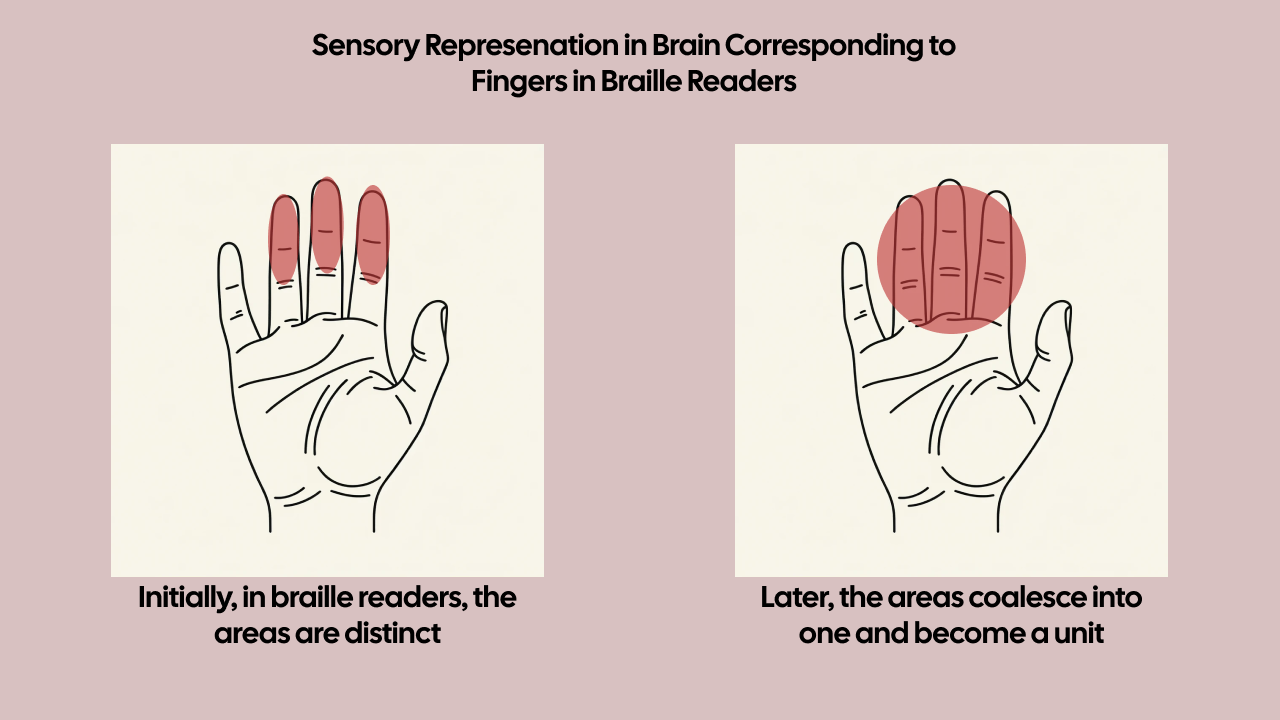
All visuals were created by the Author on Figma.
Neurons that fire together, wire together.
— Donald Hebb
So yes, your brain is capable of incredible change. But it isn’t possible within a day. It happens when accumulated in small increments over a long period.
Yet, since instant gratification is our collective human curse, most people aim for drastic changes.
One week they spend the whole day on the sofa, and the next week, they aim to hit the gym every day.
Ambitious, but unrealistic.
What people don’t realize is that the brain is capable of changing, but it also resists change.
Most of us — driven by our egos — try to change too much, too fast. We scoff at the idea of small steps, thinking we’re above them, and attempt drastic changes.
What follows is the repetitive story of why many fail to change.
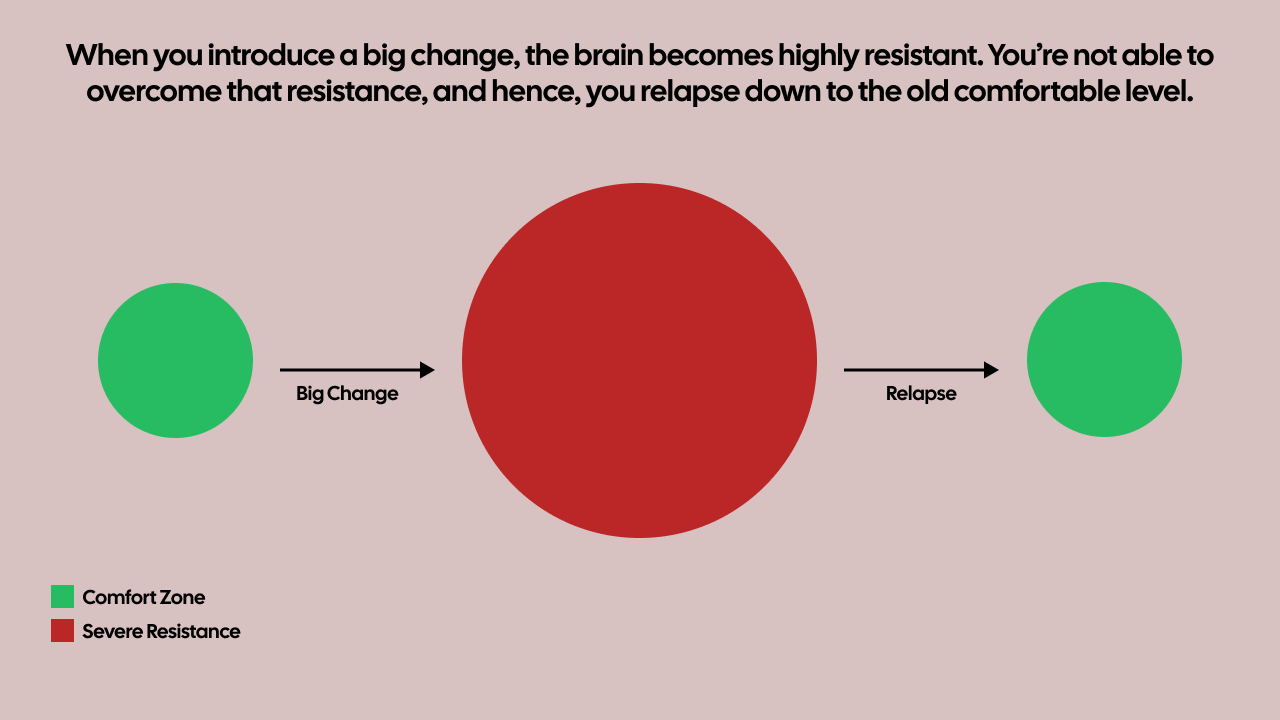
Too much change causes strong resistance in the brain. Explaining why radical changes don’t work, James Clear says, “If you step too far outside the bounds of your normal performance, then nearly all of the forces in your life will be screaming to get you back to equilibrium.”
He adds, “You might be able to beat equilibrium for a little while, but pretty soon your energy fades and the backsliding begins”. Eventually as these forces “overwhelm” our conviction, we relapse into our comfort zones.
This cycle keeps repeating itself. Years go by, and most people realize they’re stuck at the same level.
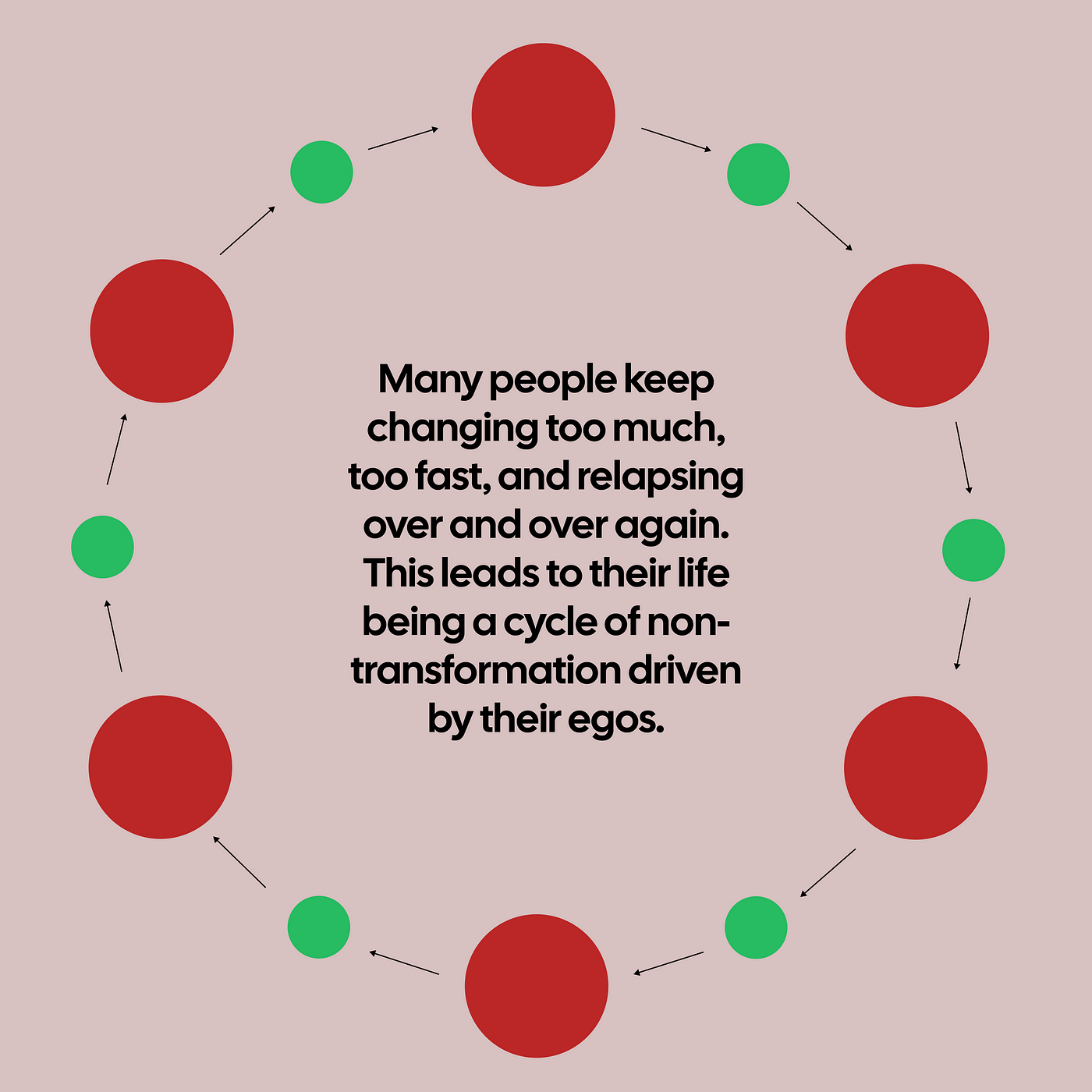
I’ve experienced this myself.
For the first couple of years as a writer, I repeatedly tried to create a “perfect” plan and stick to it but I could sustain it only for a week or two before relapsing. This cycle persisted for far too long.
Eventually, I set aside my ego and took a more gradual approach. I started slow with just 15 minutes/day and gradually increased to reach 1 hour 30 minutes/day.
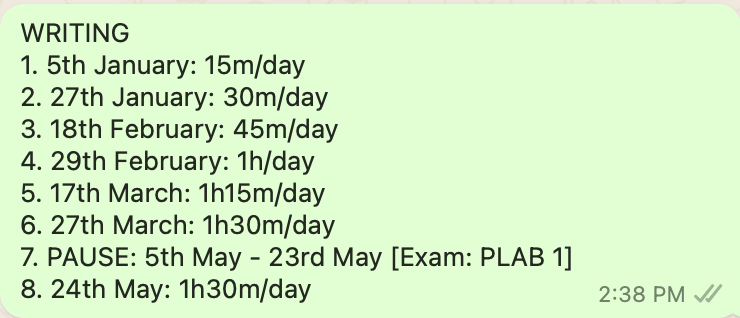
Screenshot from Author’s WhatsApp group with himself.
Our egos stop us from accepting that slow, sustainable growth, over time is what leads to true transformation.
In the book Mastery, George Leonard says that “Resistance is proportionate to the size and speed of the change, not to whether the change is a favorable or unfavorable one.”
Hence, instead of drastic changes, if you introduce a small change, it would only lead to mild resistance. That’s something we can work with.
With enough reps, the brain adapts to this new level, allowing another small change to be introduced. It’s as if you nudge the equilibrium forward.
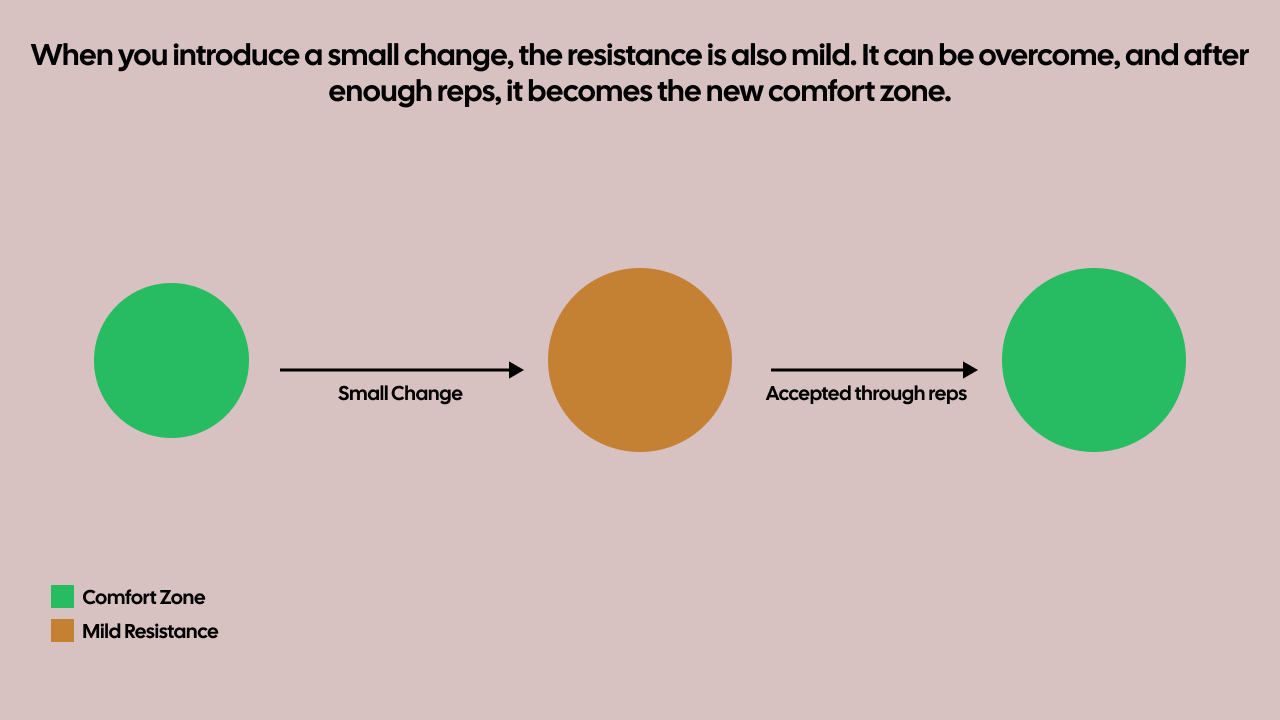
Practical Steps For Self-Transformation
Step 1: Ditch your ego to introduce small changes.
As we discussed, introducing a small change leads to manageable resistance. But this is easier said than done. Because your ego will make you feel like small changes are beneath you.
Let me prove it.
Start meditating for one minute per day from tomorrow.
Be honest —
Did a part of you scoff at the “one minute”?
Did it feel too small?
Did a voice in your head tell you that you can easily do more?
Now, do a reality check. How much have you meditated in the past few months? For most of us, I’m guessing not a lot. While everyone should meditate, estimates show that only around 15% of the adult population meditates regularly.
The truth is, that whenever you set a goal or make a plan, your ego often overestimates what you can handle.
During my first call with a client, I asked how much work he wanted to start with. He said, “Let’s start with three hours of side hustle work every week.”
He sounded so sure that three hours was easily doable. However, as a parent of two with a full-time job, and no prior momentum on his side hustle, I knew it would overwhelm him.
I didn’t say anything at the time as I wanted him to make the mistake so that the lesson would last longer.
By the next week, he had only worked 30 minutes on his side hustle. We discussed it, and I explained that he started too big and that I intentionally let him make that error so that he realized the lesson.
Trust me. Keeping your ego in check is the most important skill necessary for self-transformation.
Step 2: Cultivate energy to overcome resistance
Introducing even small changes will lead to some resistance. To overcome that, you need to cultivate mental energy.
Here are two strategies:
Create a pull by practicing visualization: Imagine yourself having accomplished the goal in as much detail as you can. This activates the brain’s reward pathways — which are driven by dopamine. Doing this will make you feel pulled towards that future reward — which will make you want to put in the effort.
Create a push by sublimation: Sublimation, in psychology, refers to converting negative, or socially unacceptable emotions into positive action. For instance, you can purposefully channel your pain, anger, or frustration into motivation to put in effort.
Step 3: Wait for the resistance to reduce

Most people don’t want to change because they think that the discomfort that comes with change is permanent. But that isn’t true.
A comforting truth you must know about this process is that the resistance doesn’t stay forever. With every rep you put in, the resistance reduces continually until eventually, the new level becomes your new comfort zone.
Let’s say you want to start exercising. In your mind:
Point A is wanting to exercise.
Point B is actually exercising.
Initially, this mental journey will be difficult as if you’re driving on a long, convoluted, and congested road. This is because this is an unfamiliar pathway for your mind.
Eventually, however, as familiarity increases, neuroplasticity will make the journey much easier. It’s as if a wide, and direct highway is built between the two points.
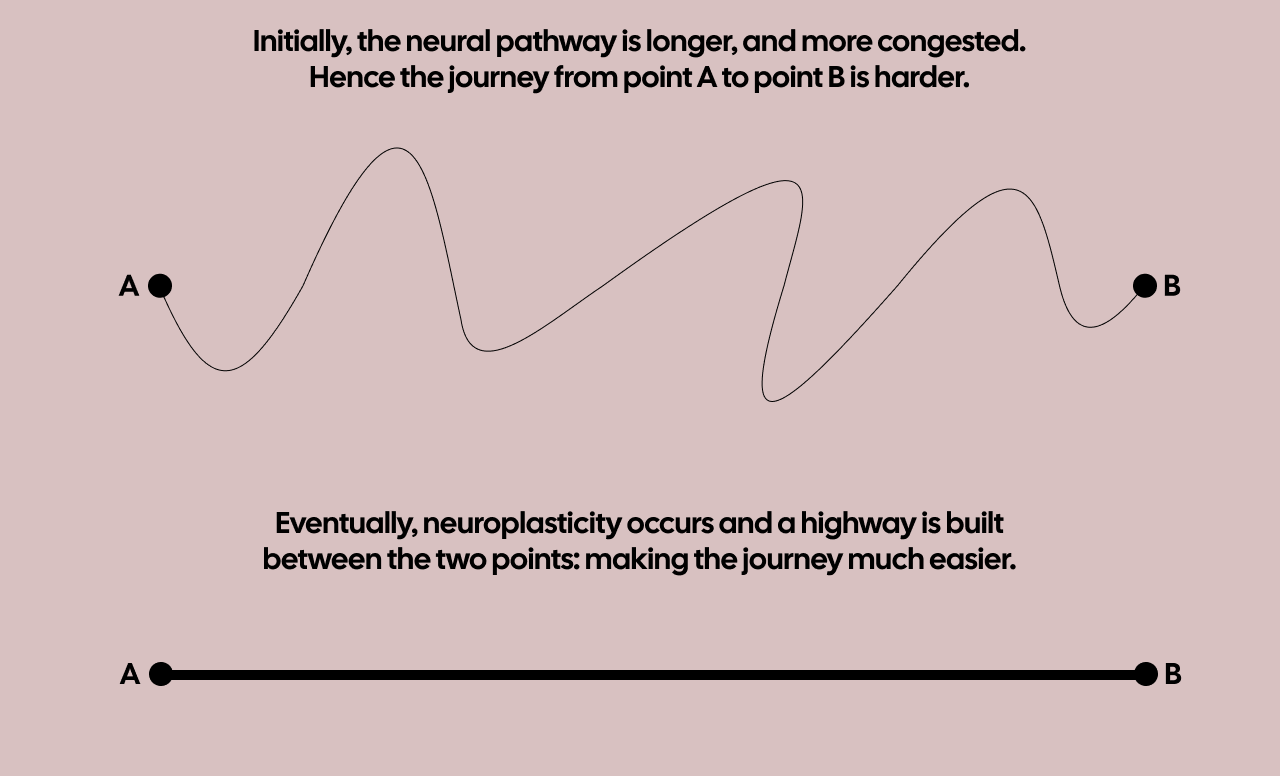
Once you truly understand this process and curb your ego from sabotaging your growth — you can do it repeatedly to transform yourself completely. Always remember, that the principles of self-transformation never change.
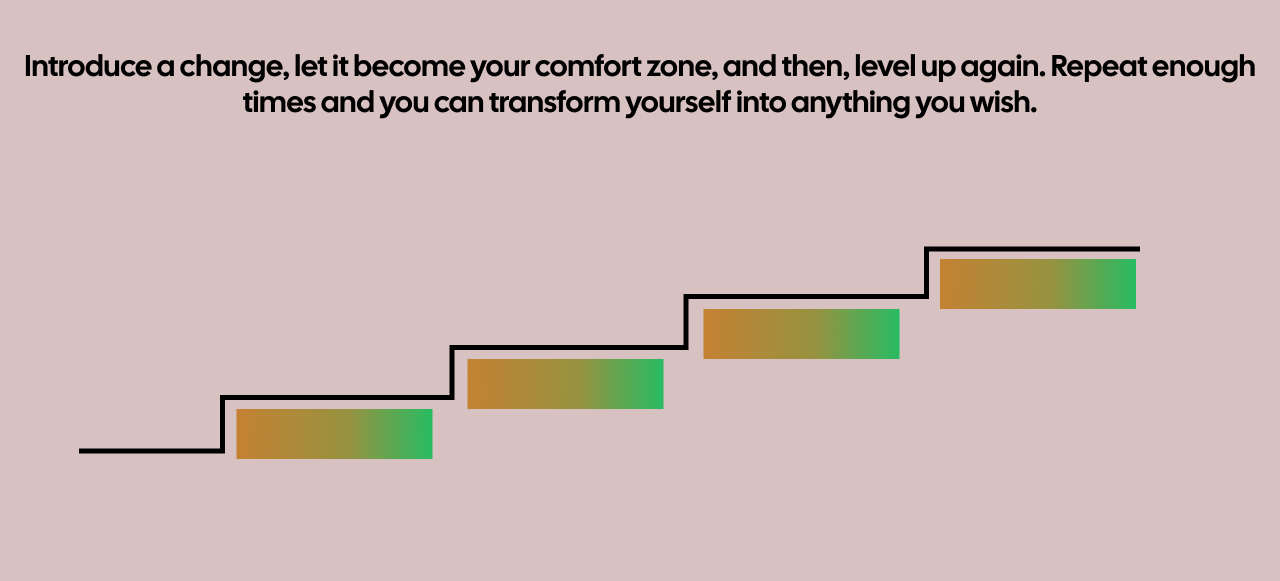
As Charles Poliquin said,
“The Basics are the basics, and you can’t beat the basics.”
Want to transform your productivity by working 1-on-1 with me? Schedule a discovery call here.